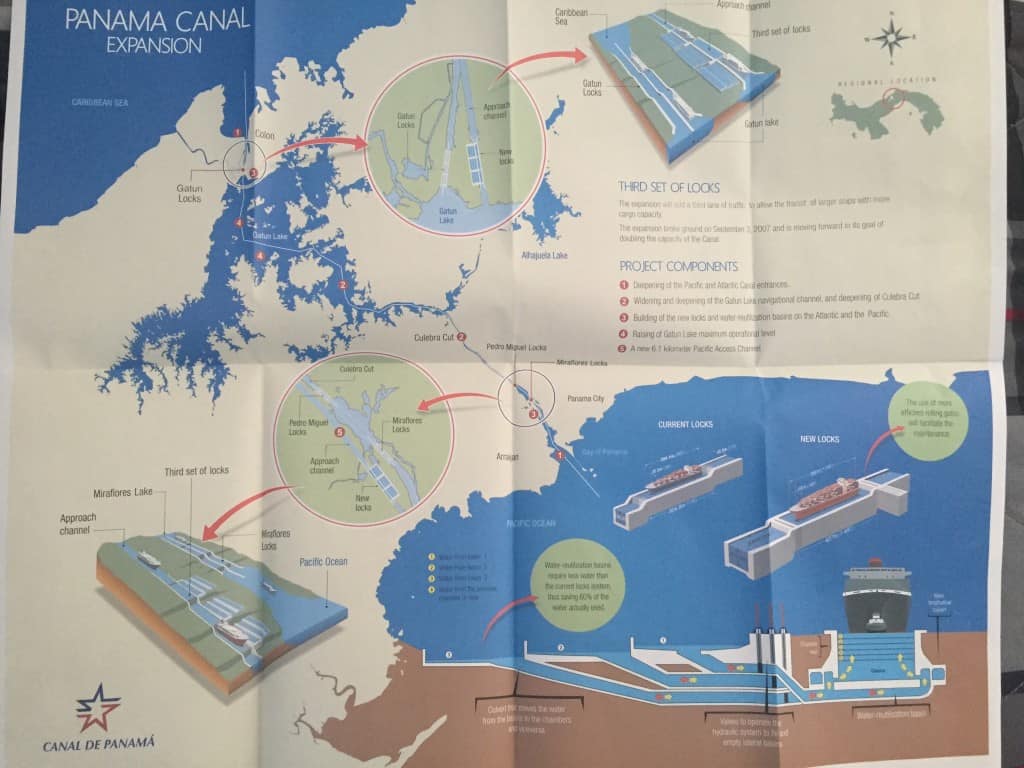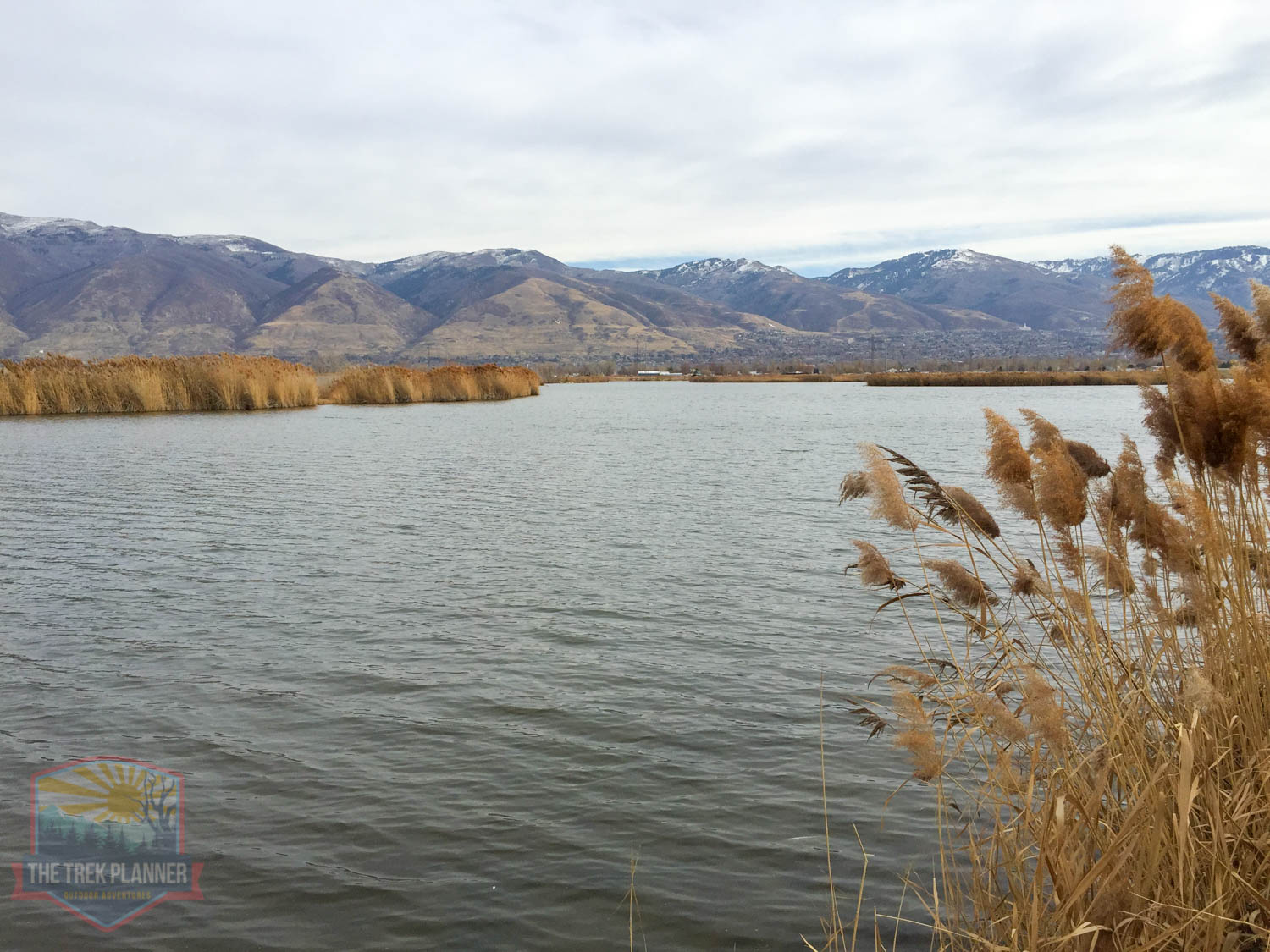
The Trek in a snapshot

Trek Planner Maps

Experience. Discover. Explore.
Follow along on our adventure then go out on your own!




Transit Guide
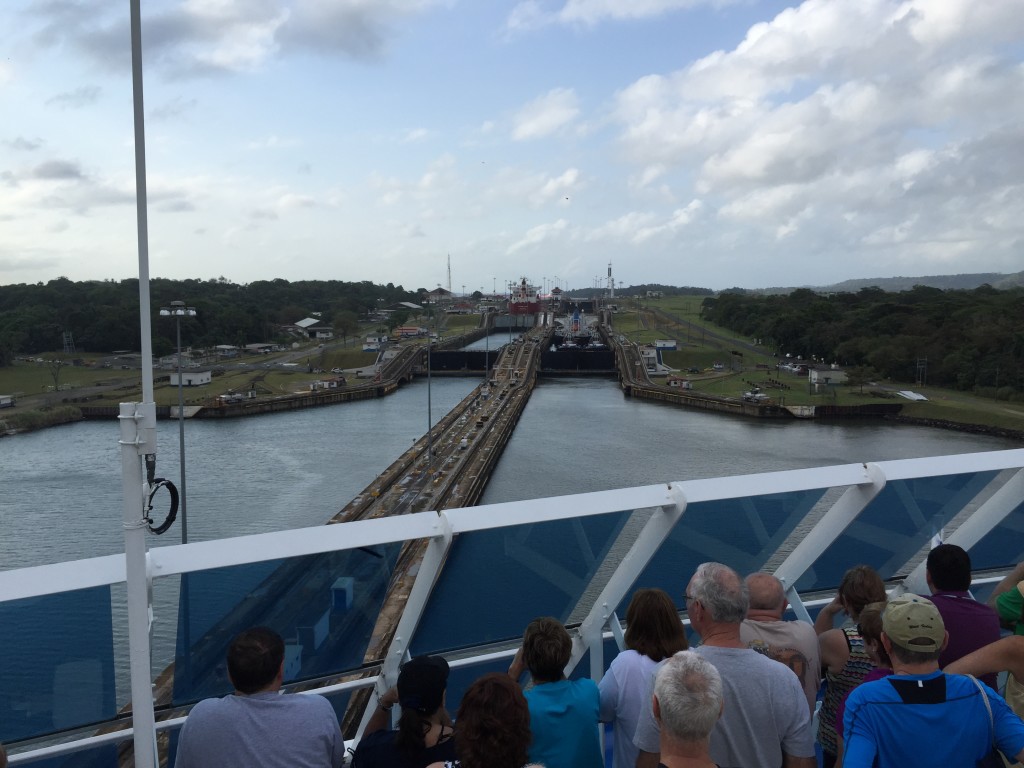
The Panama Canal is considered to be one of the most incredible engineering marvels of the world. It is about 48 miles in length and rises 85 feet above sea level. I won’t go into the history of the canal since it is worth a read! It is amazing to think just how many people worked on the canal and how many people died just to essentially…dig dirt!
Instead of taking weeks to go around South America, the transit through the canal takes less than one day. On our cruise through the canal, it took us from 8:00am until about 6:00pm to go from the Atlantic Ocean side to the Pacific Ocean. Along the way, one of the ships crew gave narration of the sites and important landmarks. We were probably going less than 10 mph the entire way through the narrow canal.
We were told that ships carrying large amounts of passengers are given expedited and priority transit, meaning, we didn’t have to wait for too many other ships to go in front of us. It took more than $200,000 in fees to transit the canal! Now I know why our cruise was so expensive!
New Locks
It is important to note that not all ships can go through the canal. Super massive cargo ships cannot transit the canal because they are obviously too large. These ships must unload all of their containers on shore and then use the railway to bring the containers to the other side of the canal and then be reloaded on the ships. The other option is for containers to be loaded on smaller ships which can transit the canal. Or you could always go around South America.
However, the Panama Government is creating a new set of much larger locks so that just about every ship in the world can transit the canal without unloading any containers or products. When we were first going through the locks, we received transmission from the Panama Canal Authority that they are 95% complete with the new locks. They should be completed this year of 2016. The new locks use the same canal but they are building newer locks right next to the current ones.
Here is look at the Panama Canal Expansion pamphlet we received while going through the canal. (Click the image see full size)
Gatun Locks (Caribbean Sea side)
To begin our transit we arrived at the Gatun Locks. The Gatun Locks are a series of three separate locks which bring ships from the Atlantic Ocean (from the Caribbean Sea) up 85 ft to Gatun Lake. This process, as you can imagine, is very slow and methodical. Just about every passenger on board went to the bow of the ship to watch the transit through the Gatun Locks. It was an incredible sight to see as our giant 964.3 ft ship barely fit inside the 1000 ft long locks.

When we approached the first set of locks, there was already one other ship in front of us and one coming down the other side. The locks are basically built like a one lane street – so traffic can go in and out of the locks in a very smooth fashion without there being too much congestion.
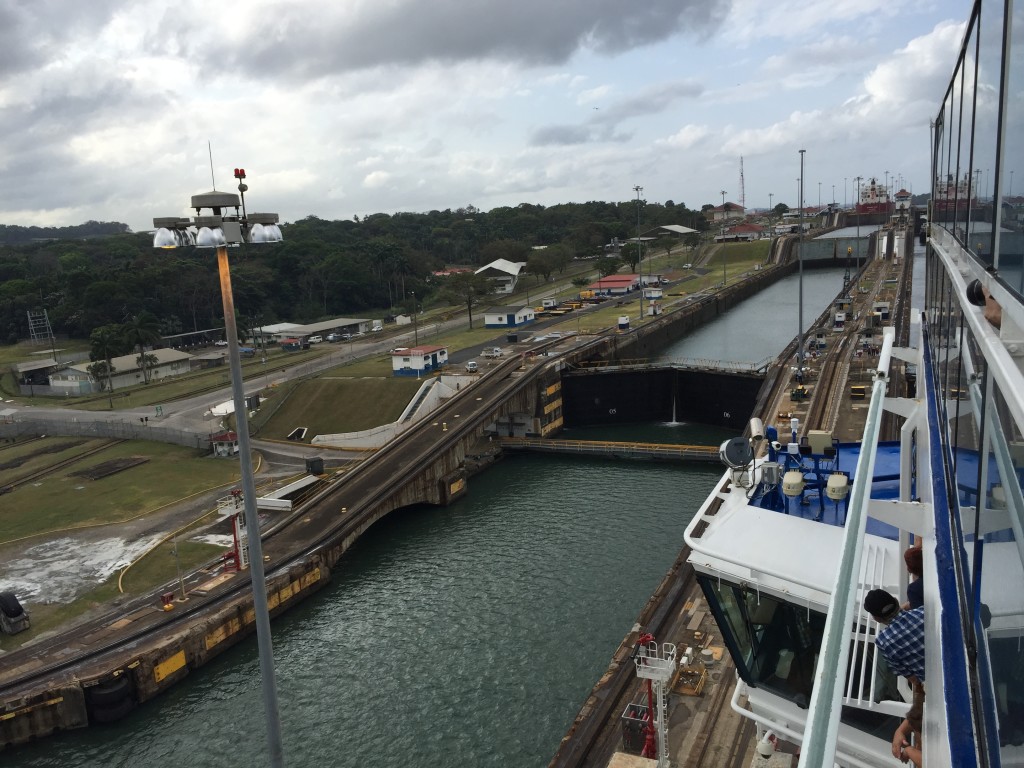
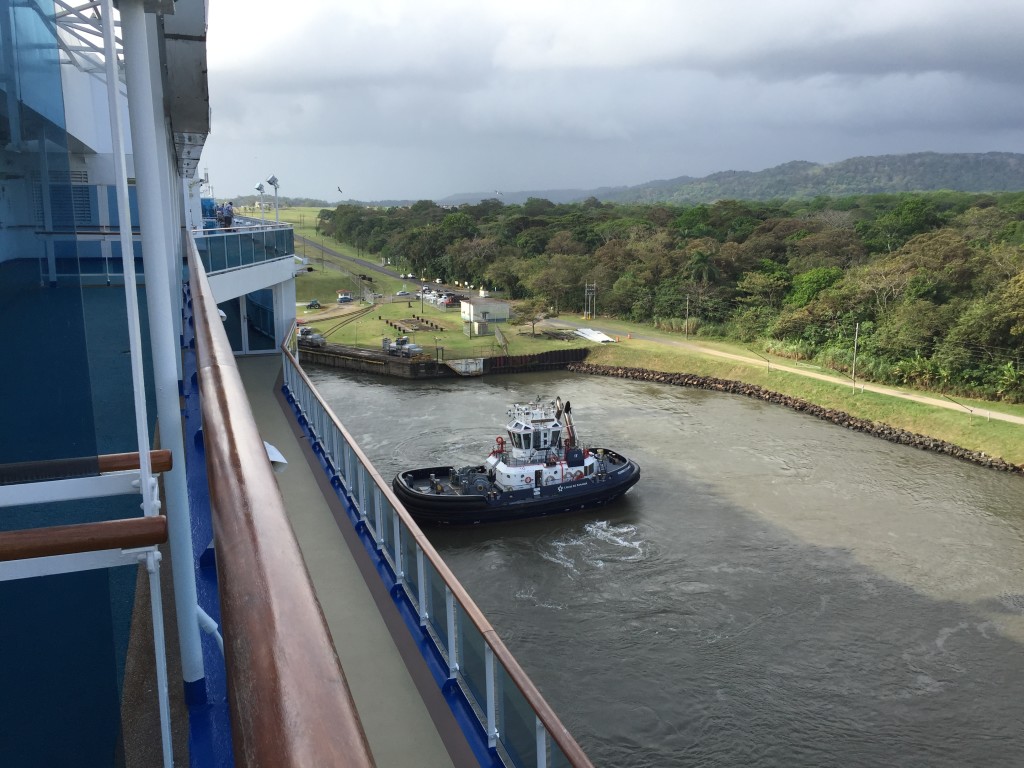
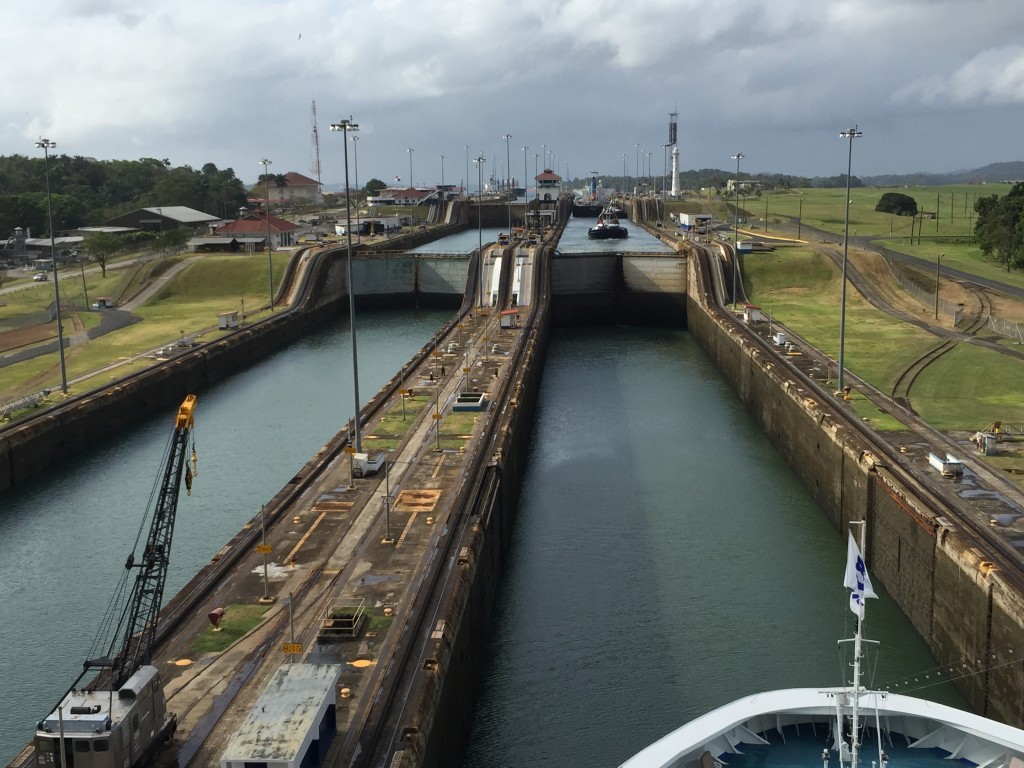
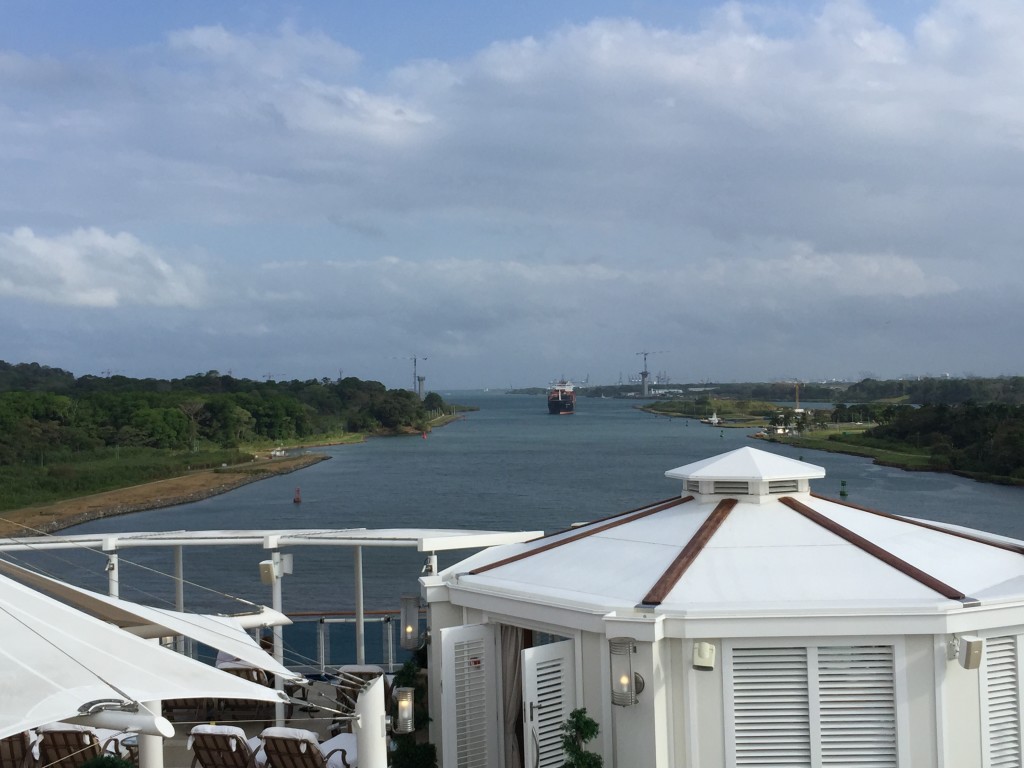
Once inside the first lock, both gates shut and water begins to fill in and slowly raise our ship to the next set of locks where we will repeat the process two more times until we are at the same level as Gatun Lake.
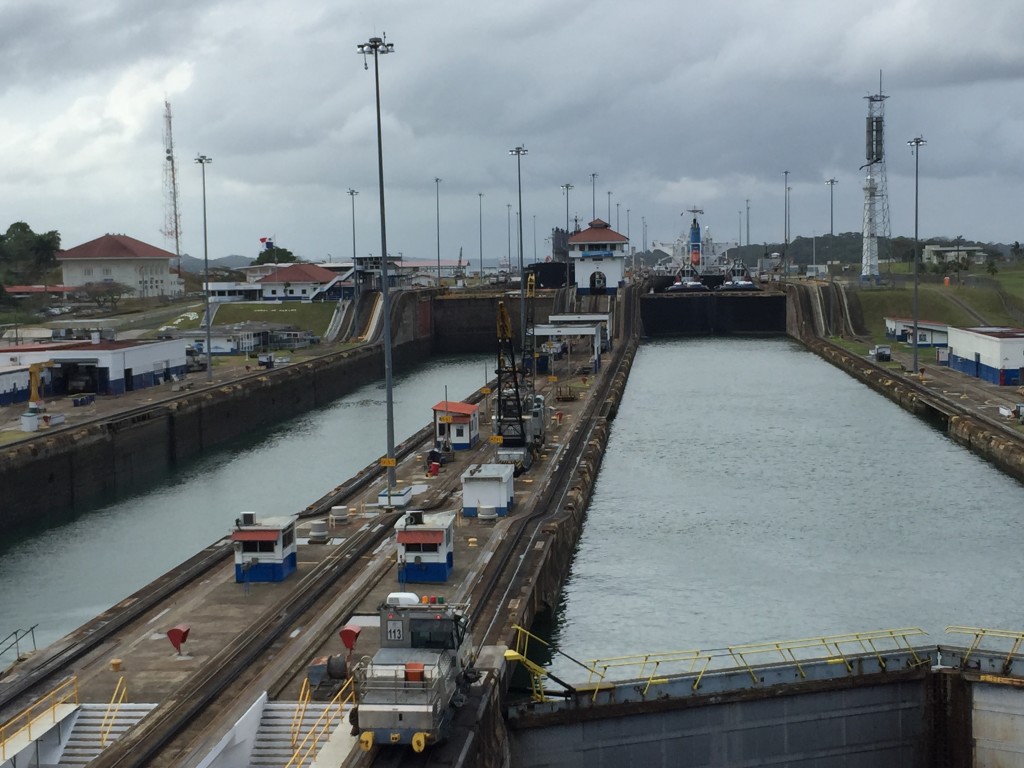
You can see that we have a little room to spare in the front (and the back). The building below with the red roof is the operations center where all the controls are located for opening and closing the lock gates.
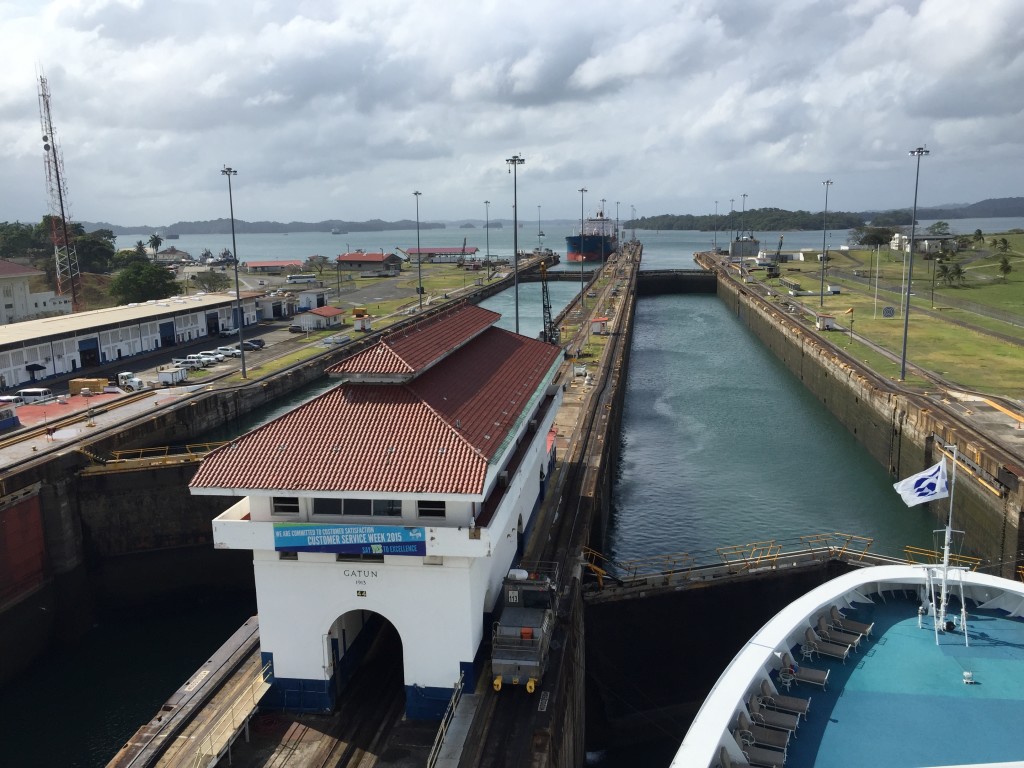
We thought it would be cool to see everything from ground level so we went down to about deck 6 to get a better view. It was really cool to see that we only had about 3 feet on each side to spare. This level was full of passengers too who were taking pictures and waving to all the workers.
We were really lucky because a huge oil tanker was coming down the locks while we were going up and we got to see the comparison of our ship going through the locks and the tanker going out.
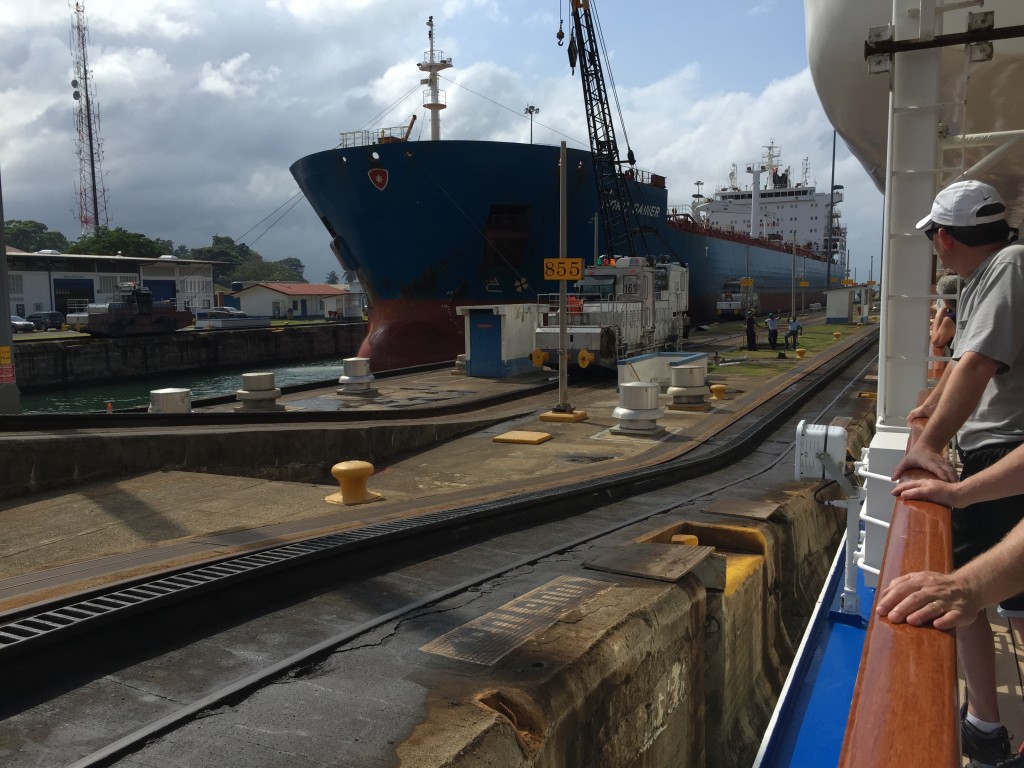
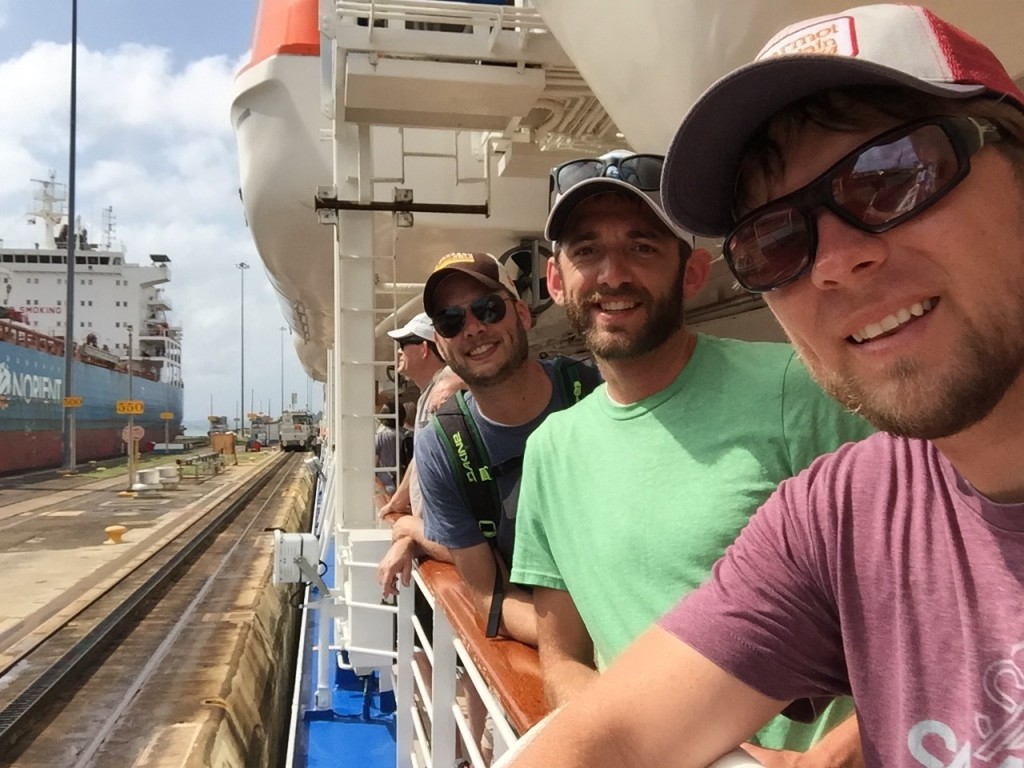
The original engineers found that it was too difficult of a task to build a sea level canal like the Suez Canal – which is why Gatun Lake is so important. The lake was dammed in several locations so that the surrounding area could be filled with water. The major source for Gatun Lake is the Chagres River which we will pass later.
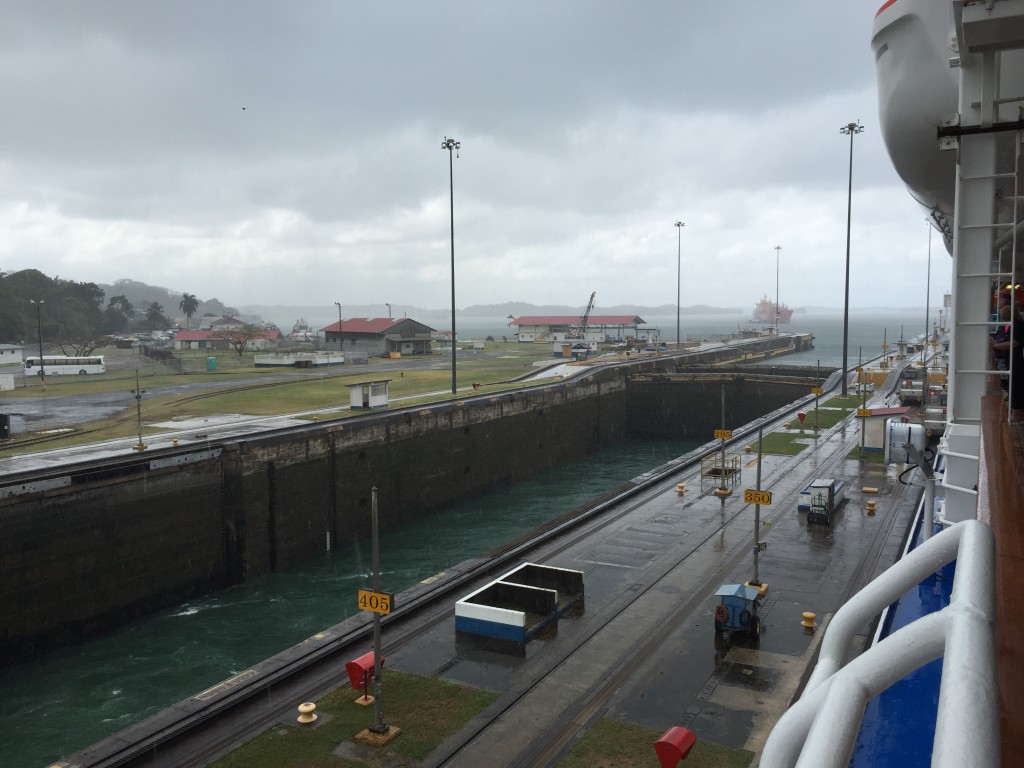
Now we are on Gatun Lake carefully cruising along so as to not create large wakes and waves. We pass by several very small communities which we are told service the canal and some of the ships going through it.
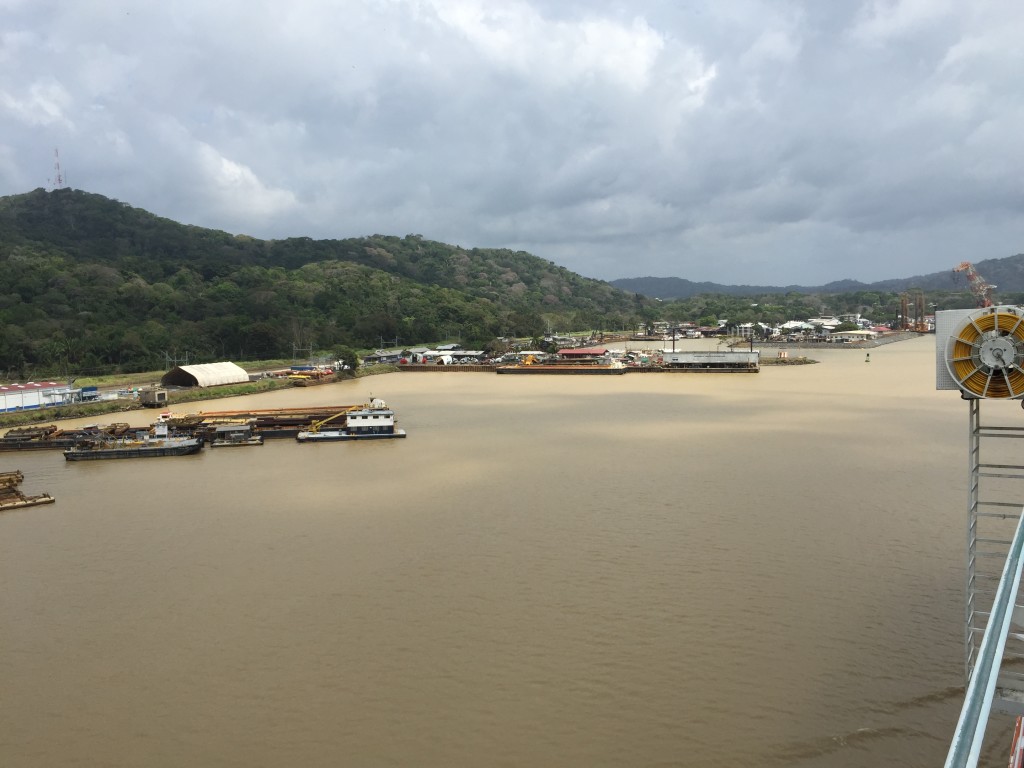
We also pass several dredges widening and deepening the canal.
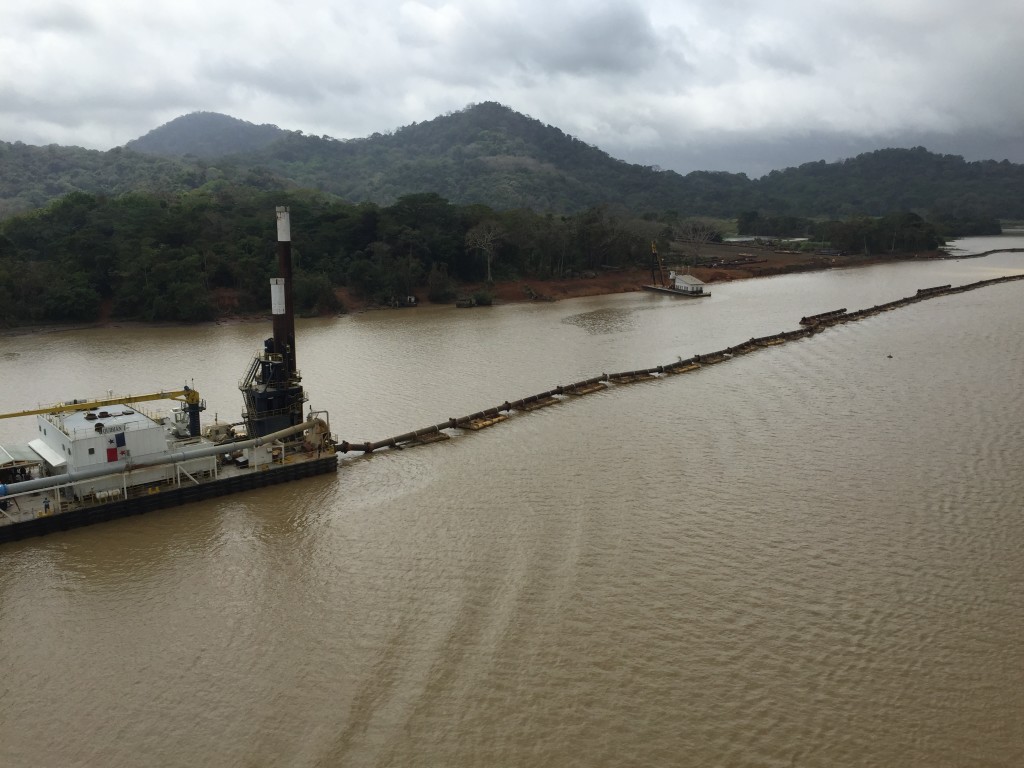
The small community of Gamboa features a giant crane called the “Titan”.
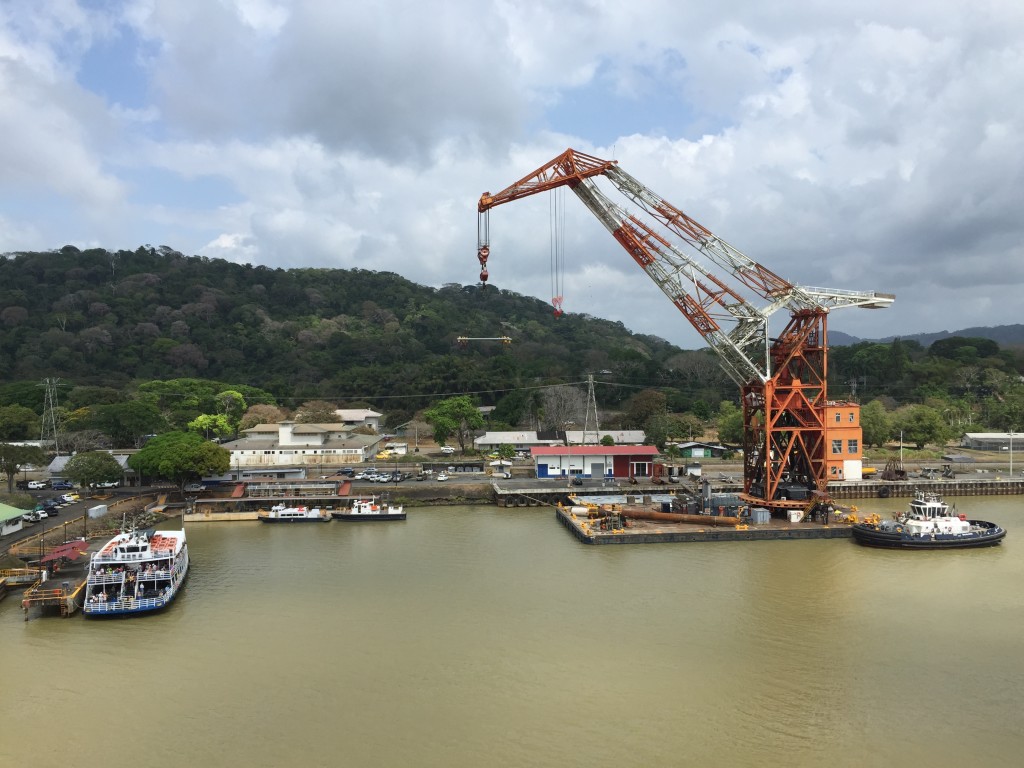
Eventually we pass by the Chagres River which empties into Gatun Lake.
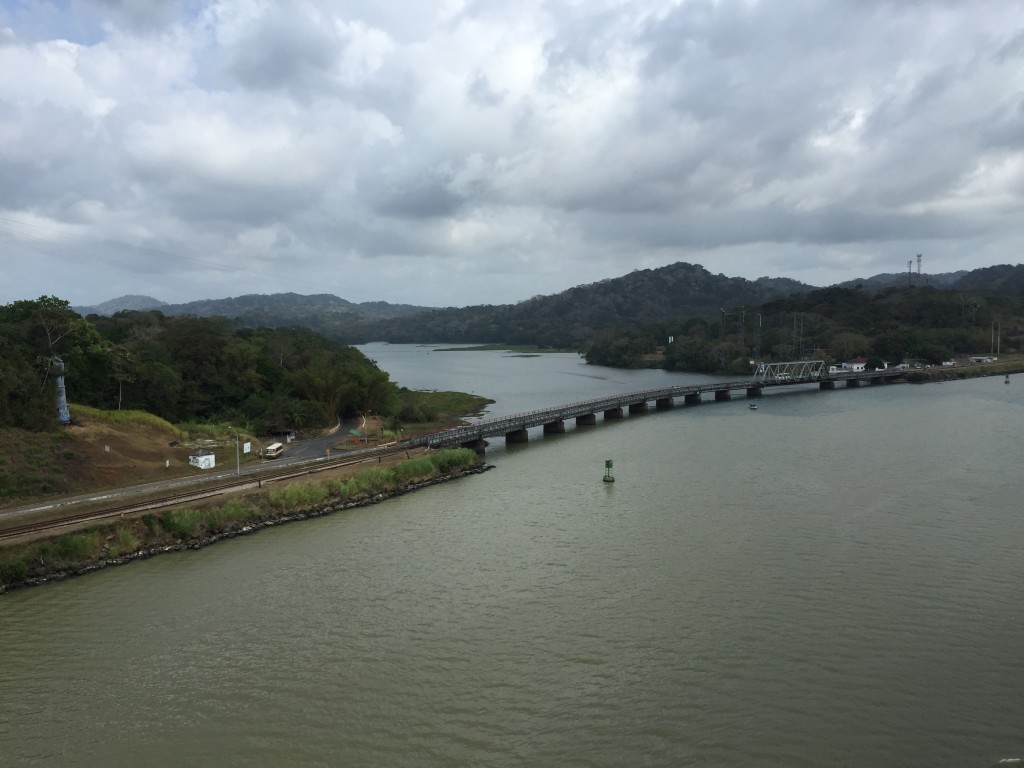
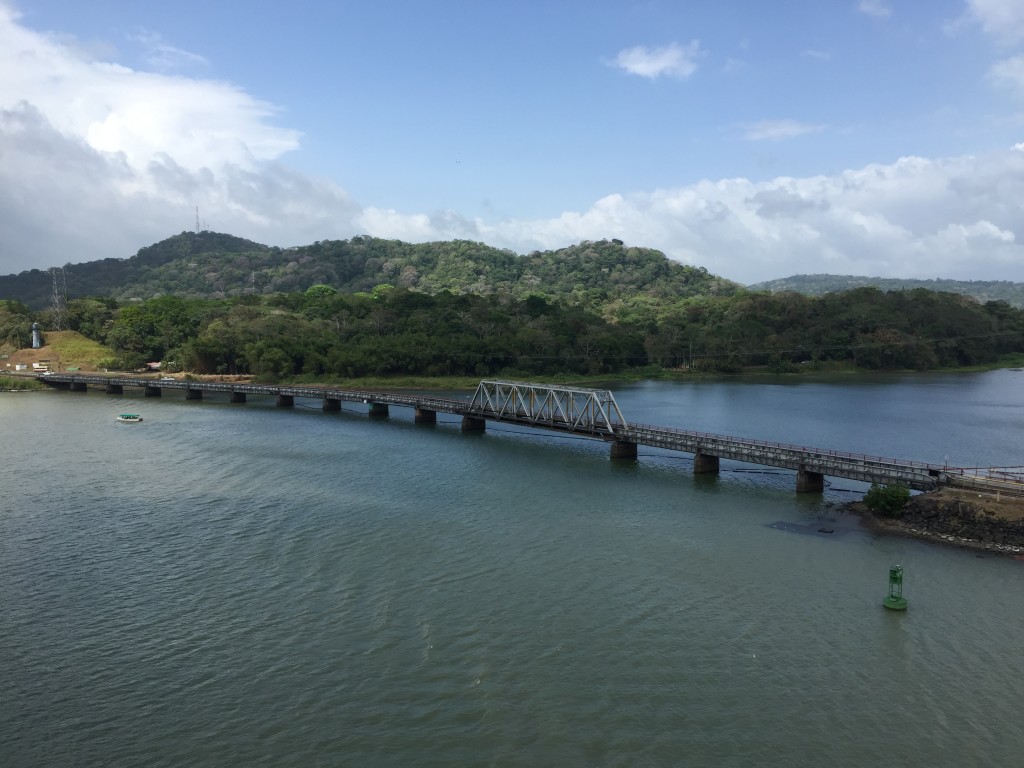
We are also told we will be passing by a small prison which is in the picture below. At least they have a nice view.
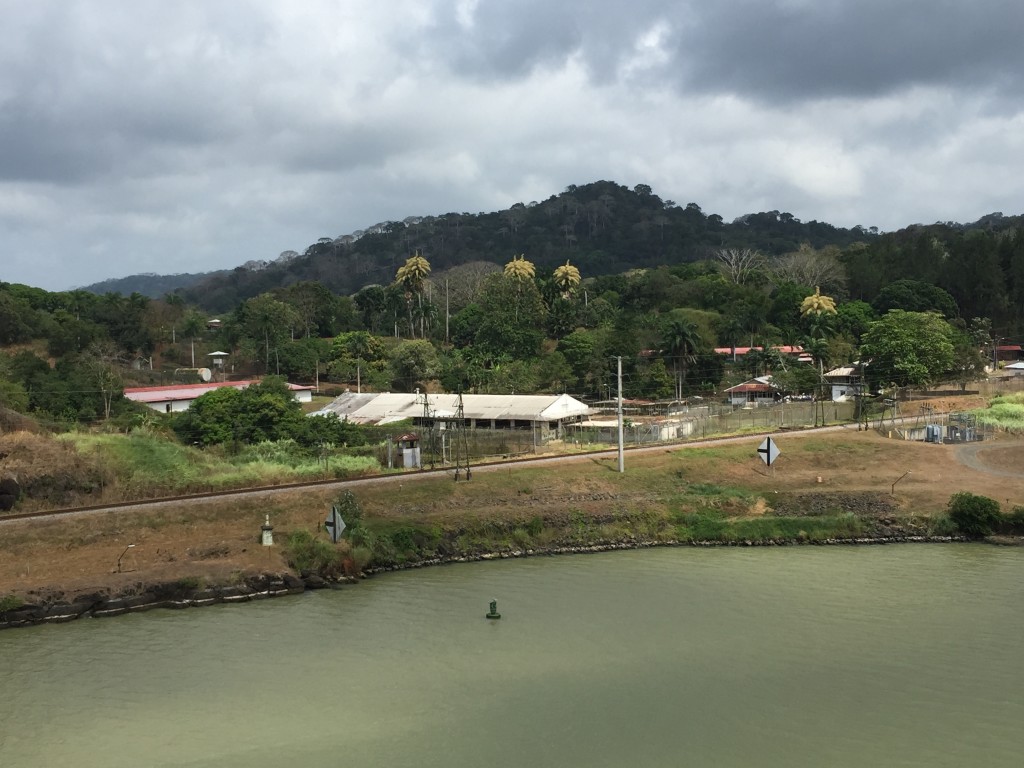
Next up is the Culebra Cut, Continental Divide and the Centennial Bridge.
The Culebra Cut literally cuts right through the Continental Divide. It is called Culebra because that is the mountain ridge which the engineers and workers needed to dig through in order to build the canal. They basically had to dig the canal from about 210 ft to 39 feet above sea level. It was an incredibly massive undertaking which started with the French and ended with the Americans.
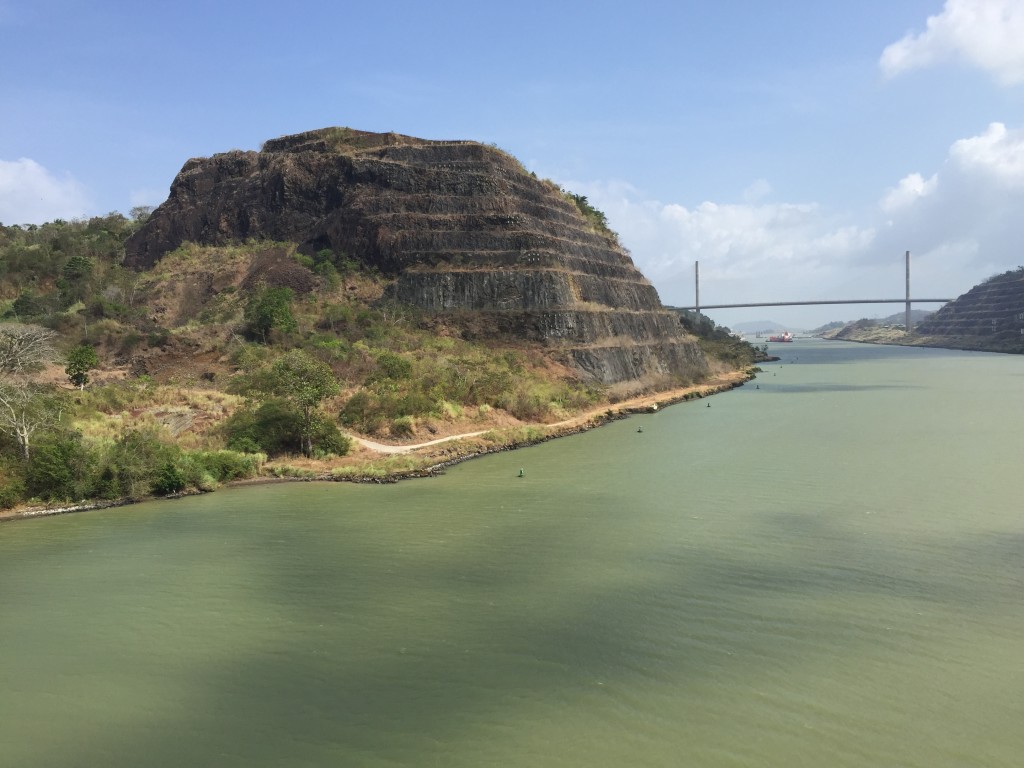
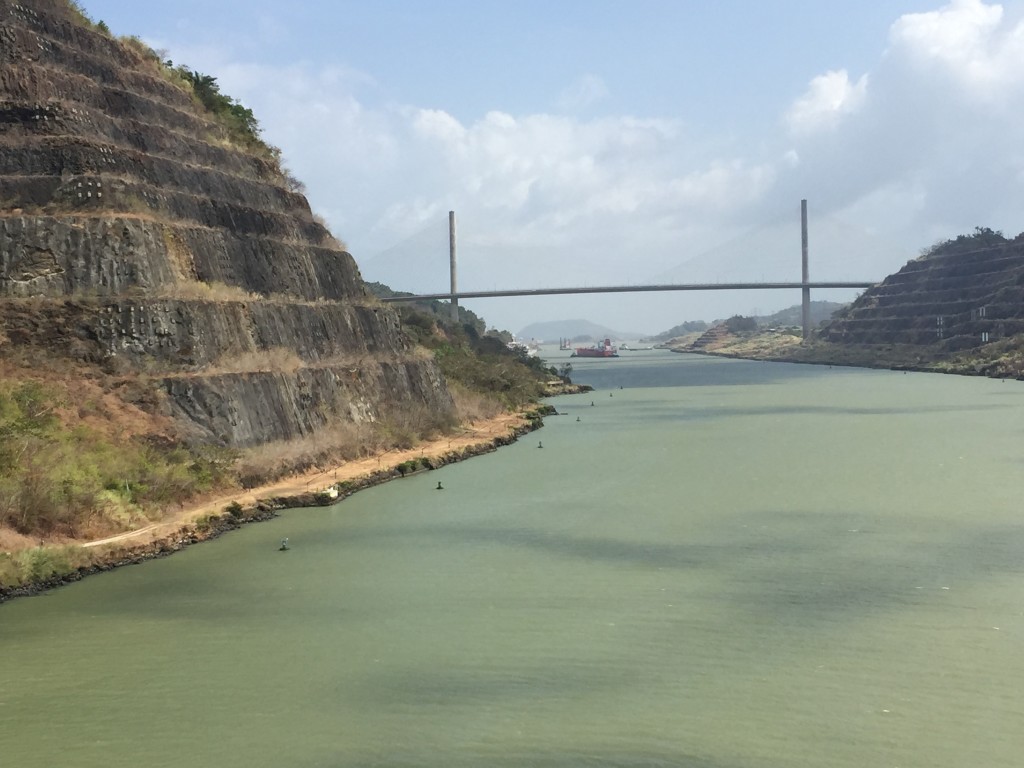
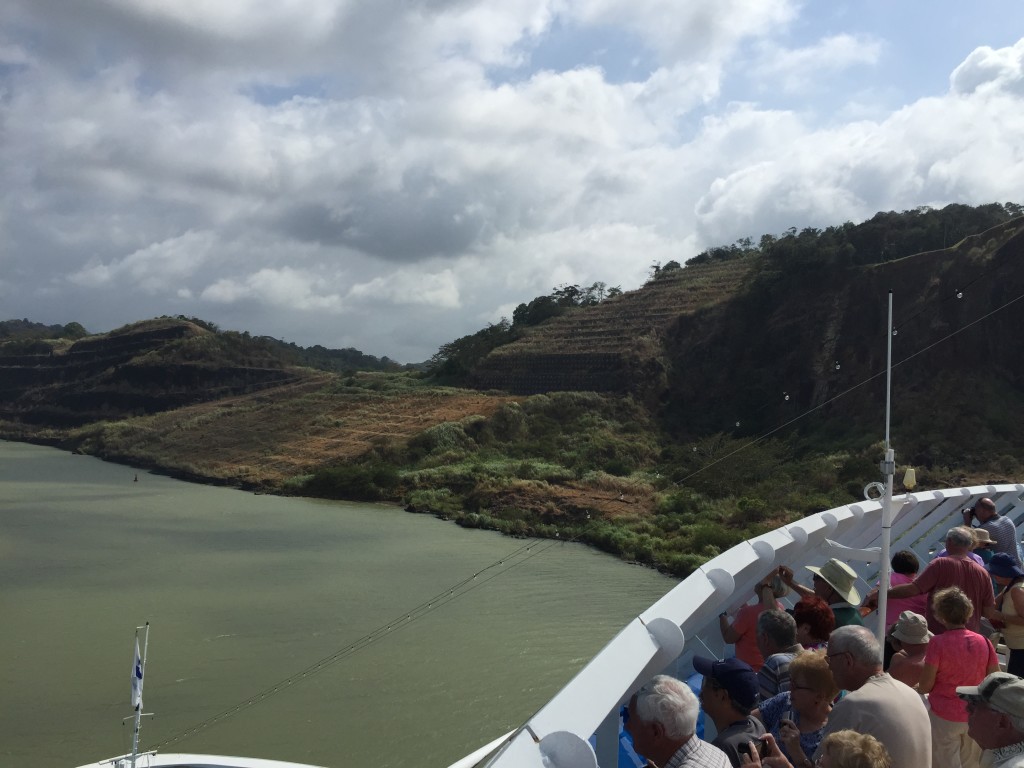
We joked that going through the Culebra Cut was like going through the Gates of the Argonath in Lord of the Rings.
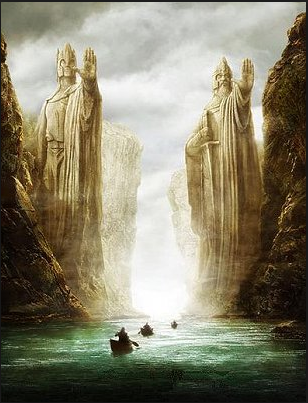
Centennial Bridge
After this we passed under the Centennial Bridge. The bridge itself is rather unremarkable and is very plain and architecturally boring in my opinion.
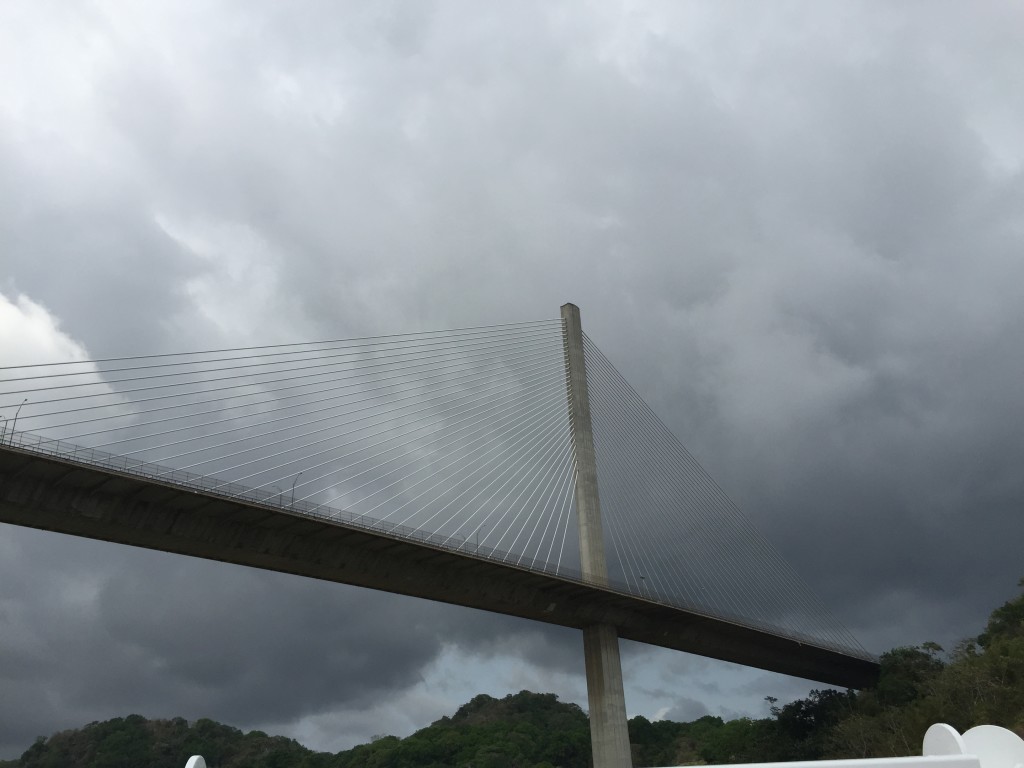
Pedro Miguel Locks
After the Centennial Bridge we arrived at the Pedro Miguel Locks which then drop us down into Miraflores lake.
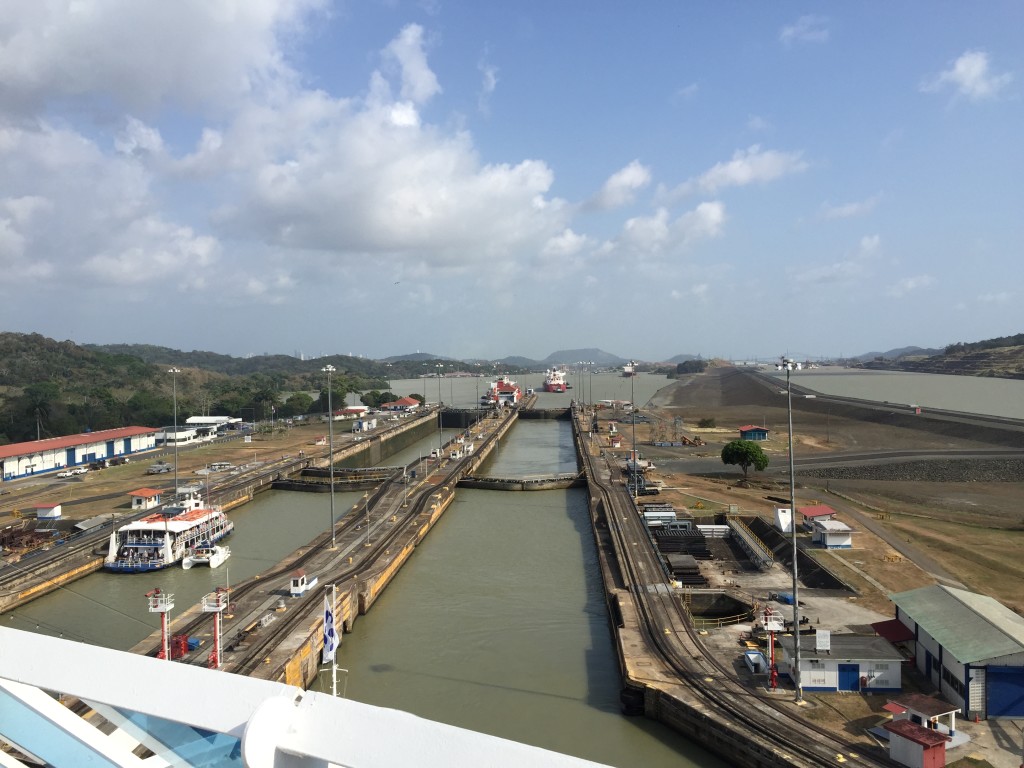
If you look the right in the above picture you can see the new approach channel that leads to the new locks. It is very wide as you can see!
The Pedro Miguel locks is just one lock which drops you 31 feet into the relatively small Miraflores lake.
Miraflores Locks (Pacific Ocean side)
The Miraflores Locks have two locks which drop us the final 54 ft until we arrive in the Pacific Ocean.
This part was really exciting because we could see Panama City in the back ground and we were finally completing our journey through the canal. It was incredible to think how many years it took and how difficult it was to excavate all of that rock and dirt and here we are going through it in less than a day!
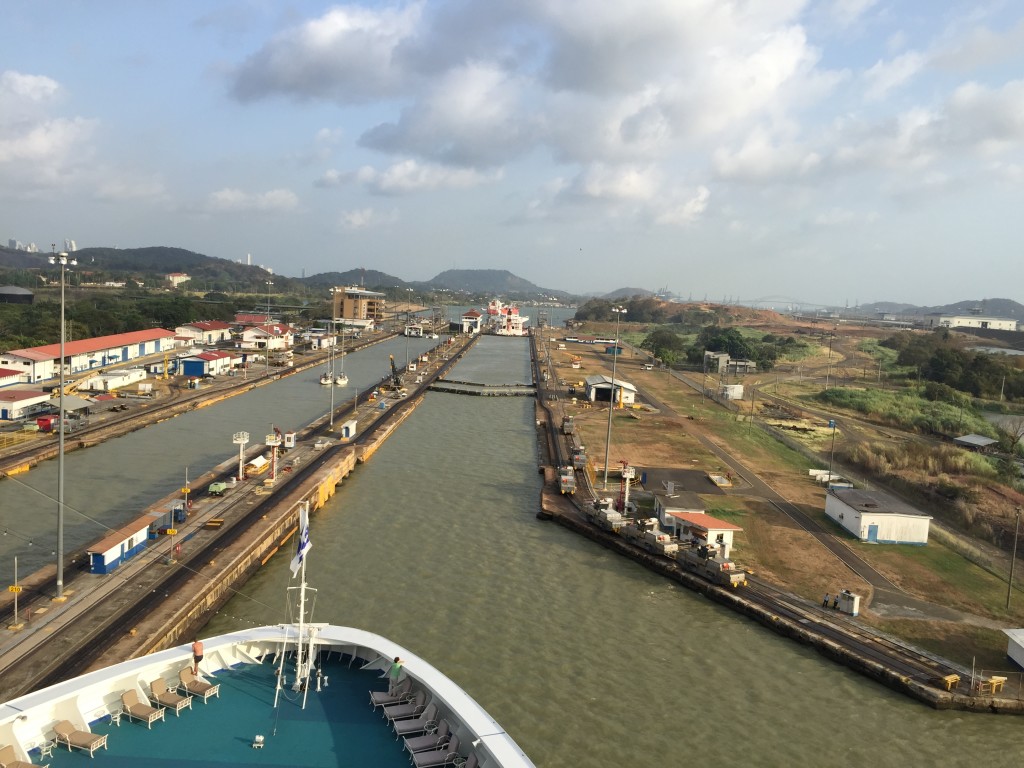
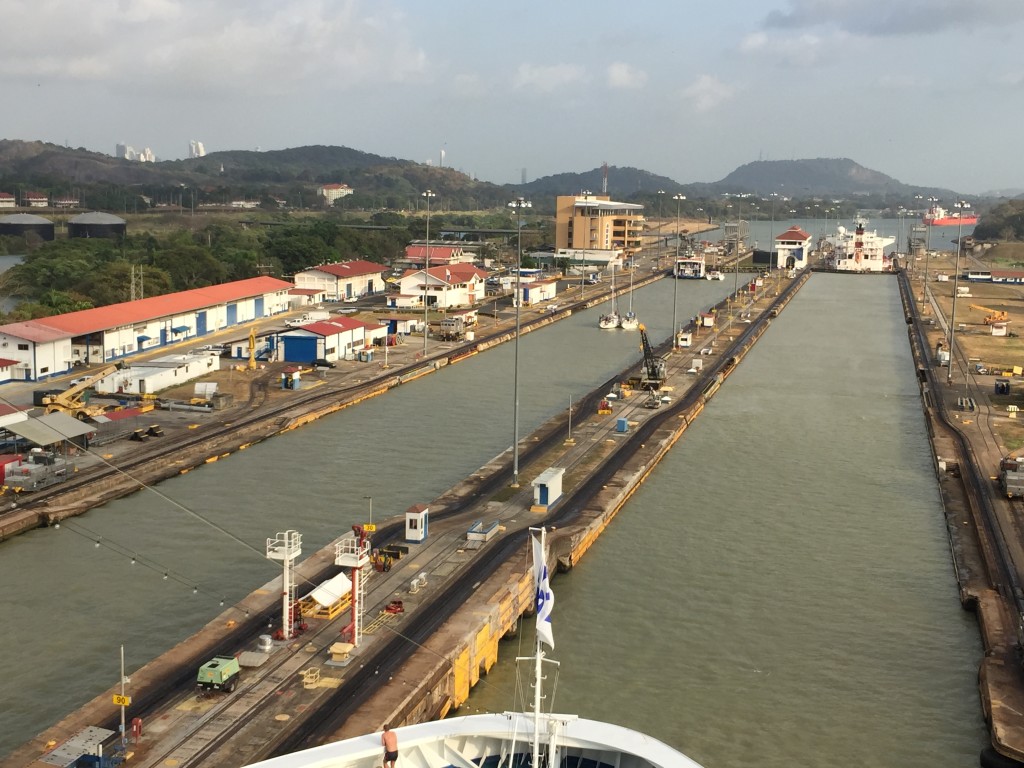
We had to take a selfie of us with the new locks (in the picture below).
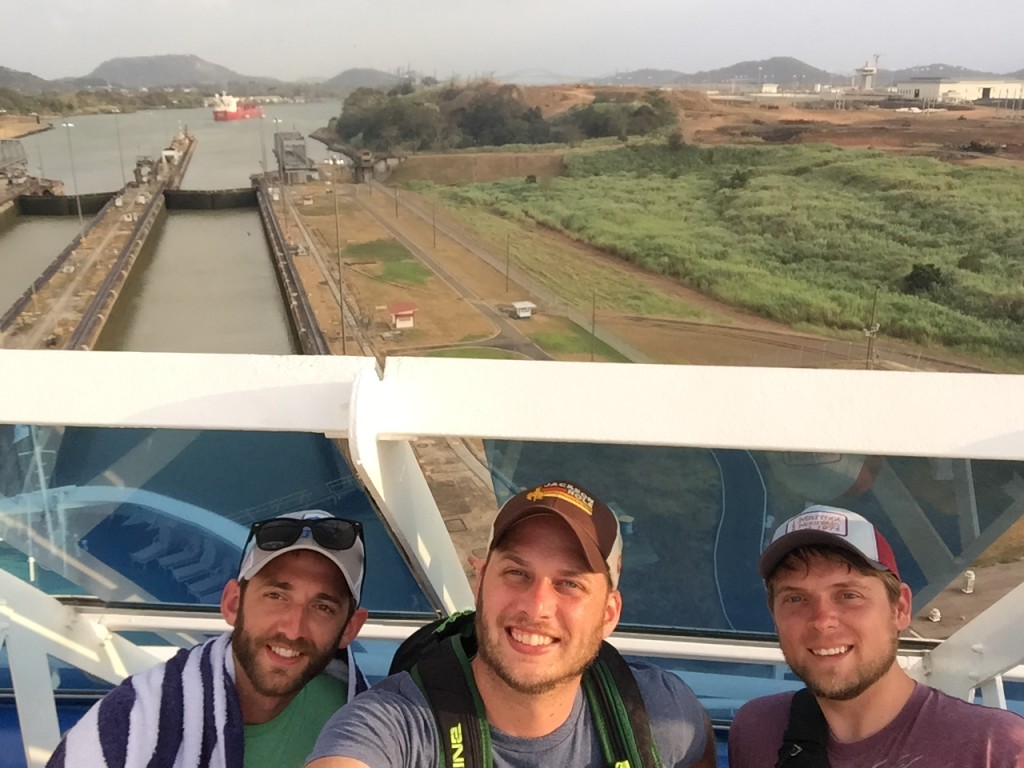
Here we are just about to exit the canal.
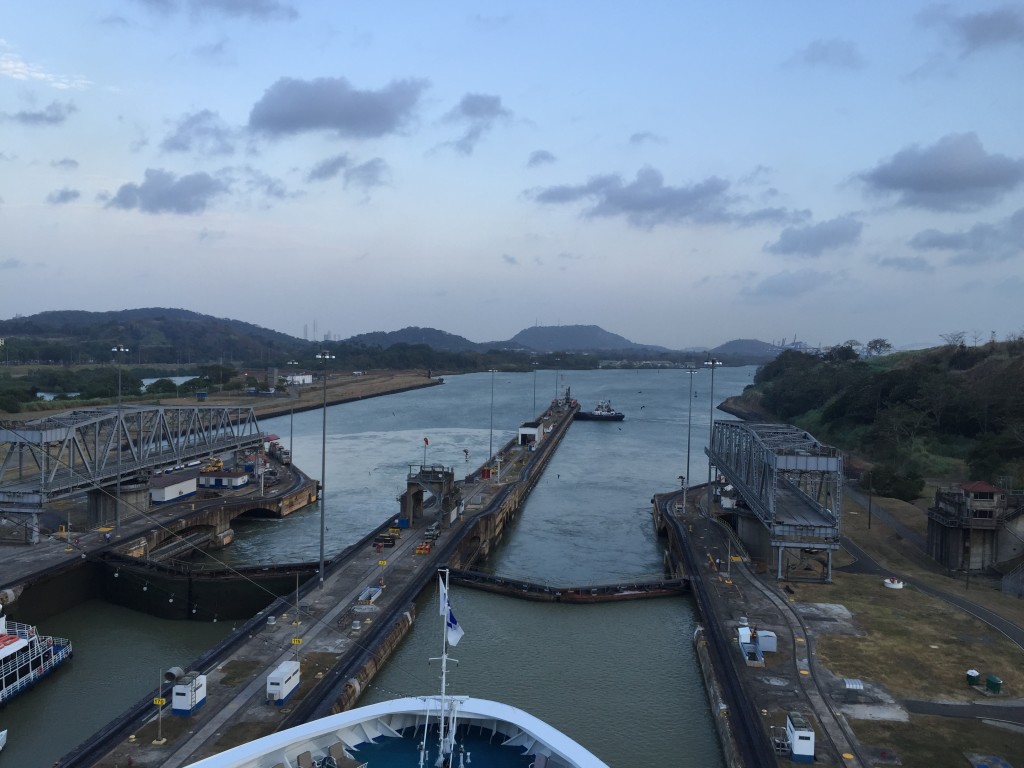
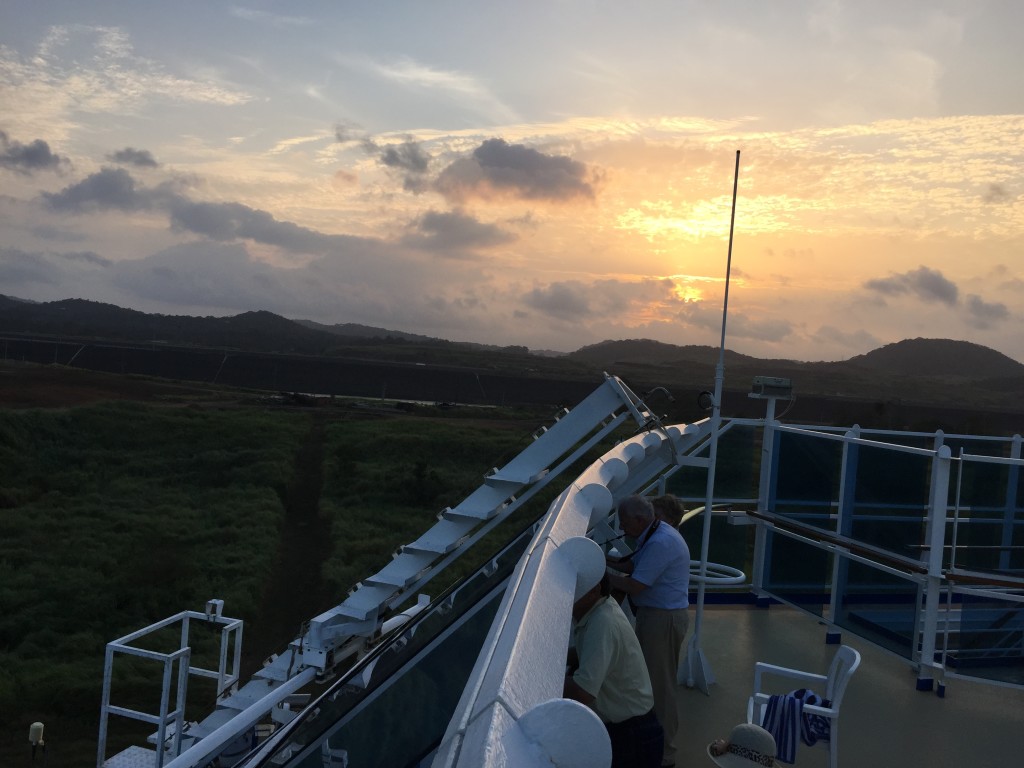
Once we were out of the canal it got too dark for me to get a good shot of the Bridge of the Americas but it is the bridge which symbolically connects South America with Central America. You can kind of see it in the picture below.
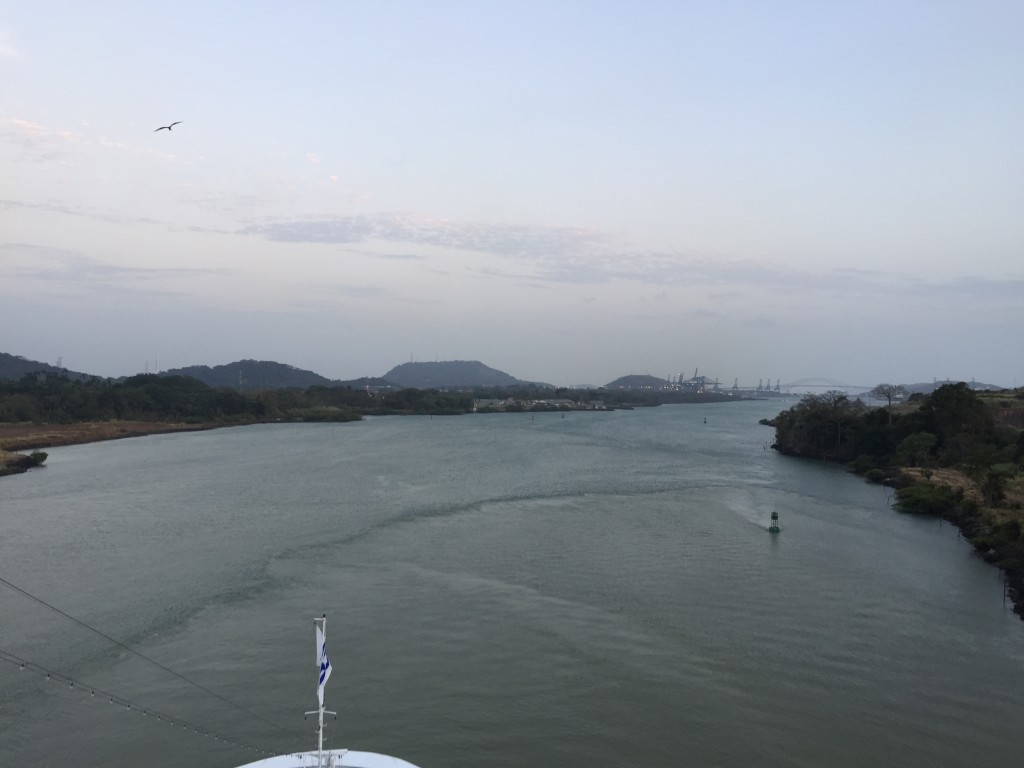
Ship Damage
We had a tender port in Panama City so we got a really good look at the damage done to our ship by the locks. The captain of our ship said that every transit they repaint and repair all the damage.
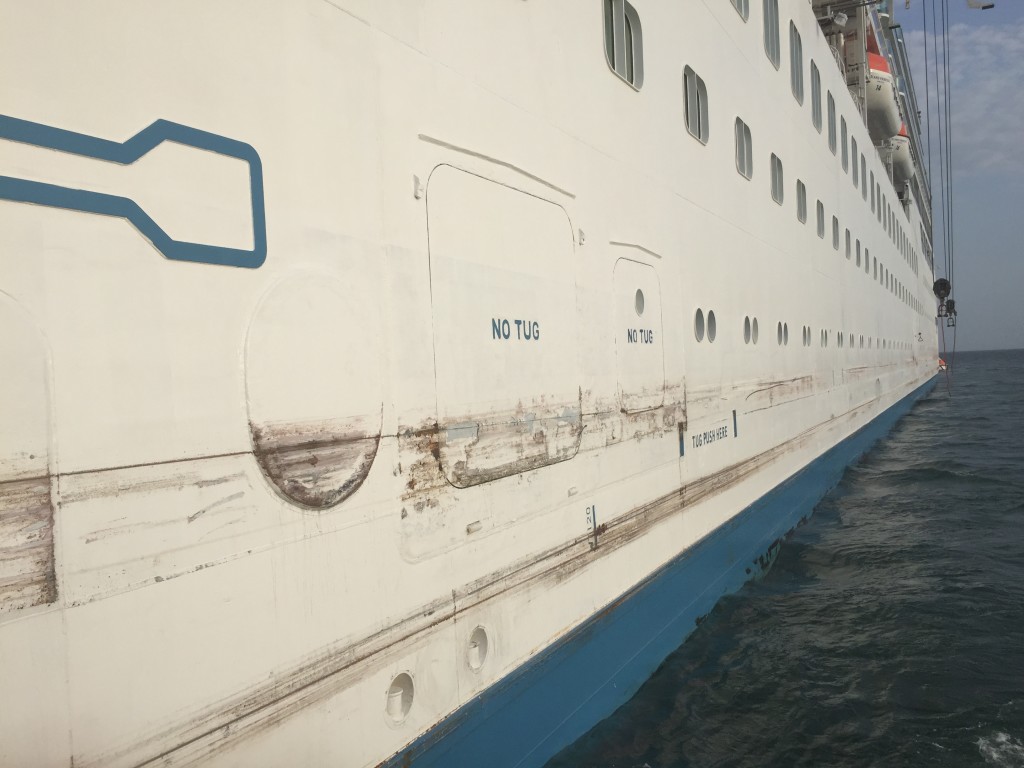

Panama Canal Railway
If you want to relive the experience of going through the canal on a more intimate level, you can book an excursion through the canal and go on a smaller vessel. Or you can also book tickets on the railway which travels back to Colon for the Gatun Locks and you can get out and see ships up close and personal go through the locks. You also get a good tour of many of the buildings and operations behind the canal. This tour was about $300+ per person.
Panama City
The next day we spent in Panama City. We had tons of fun exploring around even though it was hot and the humidity was at around 15,000%! Unfortunately for us, we arrived on a day of the festival of Carnival so all of the cool Spanish ruins and most of the shops were closed that we wanted to see.
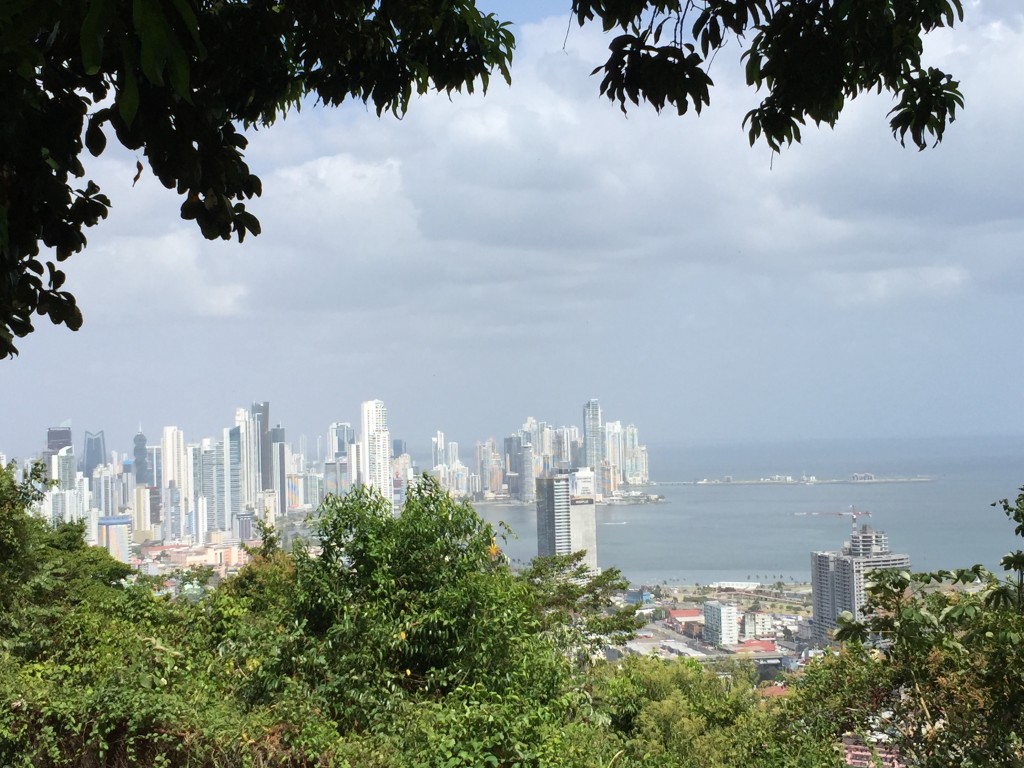
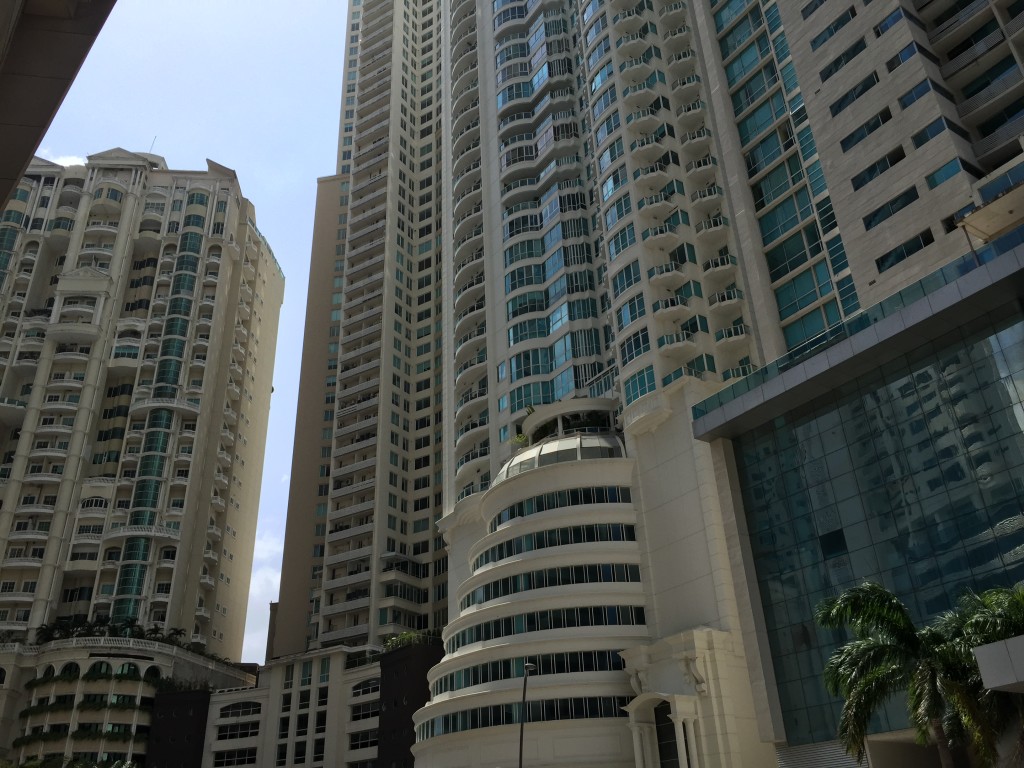
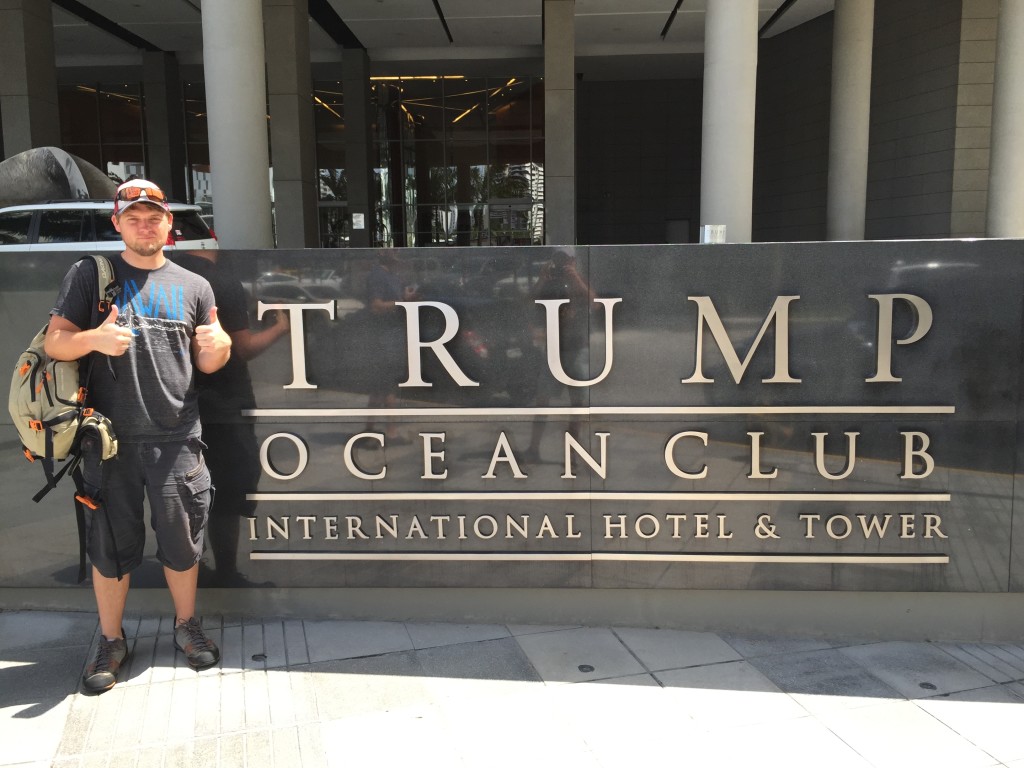
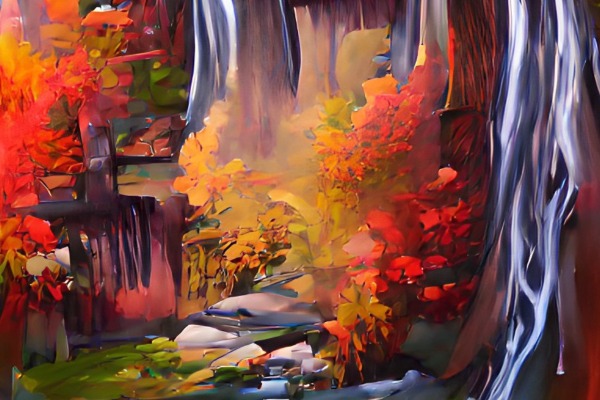
Personal Thoughts
Seeing the Panama Canal in person has to be one of the greatest things I have ever experienced. I love the history behind the canal and having watched a documentary and reading about it beforehand made this even more special. If you are planning a trip through it, I recommend you learn all you can about Panama and the canal before you go. I purposely left out historical information in this Trek because it is worth reading a few books about the people, skill and strength needed to build it.

